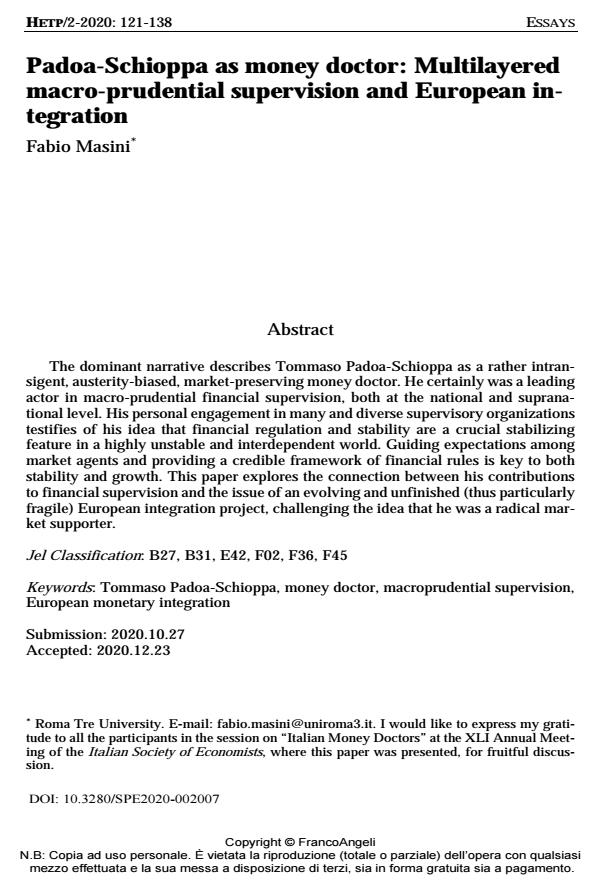Padoa-Schioppa as money doctor: Multilayered macro-prudential supervision and European integration
Journal title HISTORY OF ECONOMIC THOUGHT AND POLICY
Author/s Fabio Masini
Publishing Year 2021 Issue 2020/2
Language English Pages 18 P. 121-138 File size 99 KB
DOI 10.3280/SPE2020-002007
DOI is like a bar code for intellectual property: to have more infomation
click here
Below, you can see the article first page
If you want to buy this article in PDF format, you can do it, following the instructions to buy download credits

FrancoAngeli is member of Publishers International Linking Association, Inc (PILA), a not-for-profit association which run the CrossRef service enabling links to and from online scholarly content.
The dominant narrative describes Tommaso Padoa-Schioppa as a rather in-transigent, austerity-biased, market-preserving money doctor. He certainly was a leading actor in macro-prudential financial supervision, both at the national and supranational level. His personal engagement in many and diverse supervisory or-ganizations testifies of his idea that financial regulation and stability are a crucial stabilizing feature in a highly unstable and interdependent world. Guiding expecta-tions among market agents and providing a credible framework of financial rules is key to both stability and growth. This paper explores the connection between his contributions to financial supervision and the issue of an evolving and unfinished (thus particularly fragile) European integration project, challenging the idea that he was a radical market supporter.
Keywords: Tommaso Padoa-Schioppa, money doctor, macroprudential supervi-sion, European monetary integration
Jel codes: B27, B31, E42, F02, F36, F45
Fabio Masini, Padoa-Schioppa as money doctor: Multilayered macro-prudential supervision and European integration in "HISTORY OF ECONOMIC THOUGHT AND POLICY" 2/2020, pp 121-138, DOI: 10.3280/SPE2020-002007